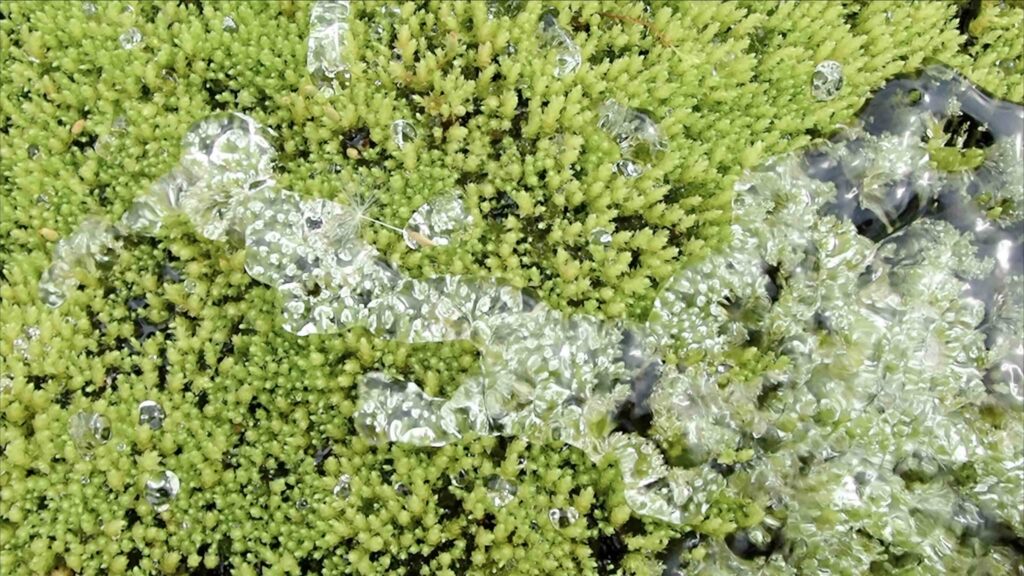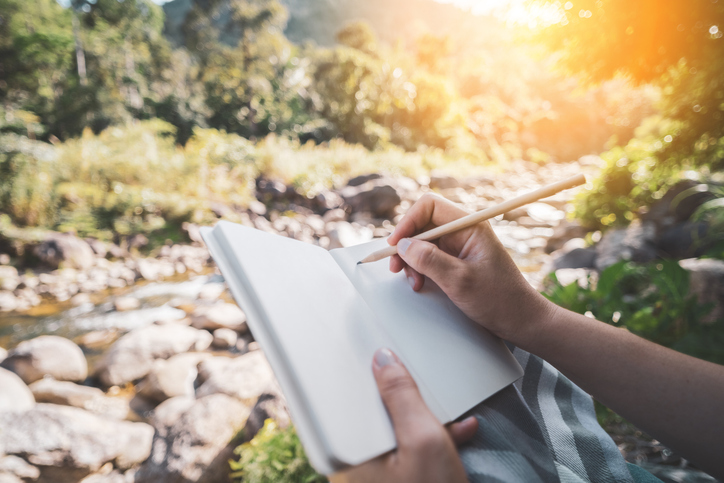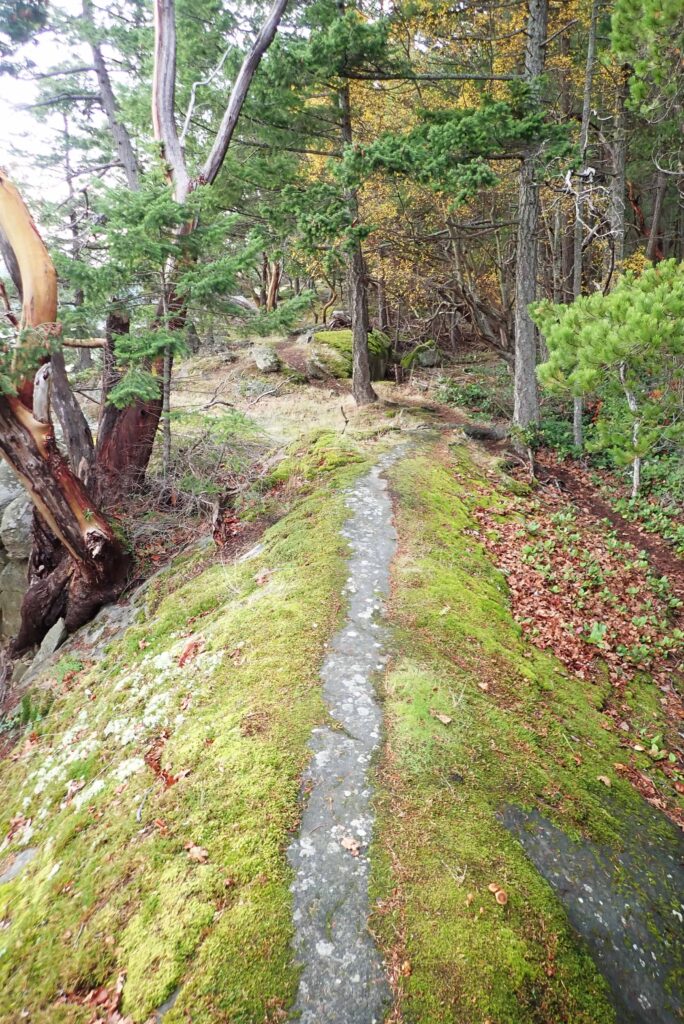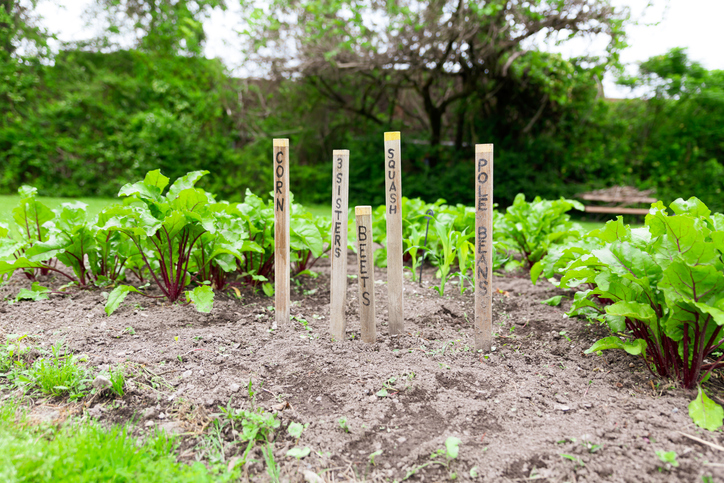In the chapter “A Mother’s Work” Robin Wall Kimmerer walks waist-deep into a pond. As she writes, “Transformation is not accomplished by tentative wading at the edge.” Rake in hand, and with the protozoans as her partners, she felt at home as she attempts to clear the eutrophied waters into a swimming hole for her daughters.
This post is an invitation to wade deeper into decolonial education, inspired by Kimmerer’s book Braiding Sweetgrass, with connections made to the climate emergency.
Braiding Sweetgrass outlines a vision for the future rooted in land stewardship and reciprocity. At KPU her book is required reading in courses as diverse as biology, expressive arts, English, and sustainable agriculture. In the preface she states how sweetgrass “is an intertwining of science, spirit, and story—old stories and new ones that can be medicine for our broken relationship with earth, a pharmacopoeia of healing stories that allow us to imagine a different relationship, in which people and land are good medicine for each other.”
This is what her book offers, a good medicine that can also inform teaching and learning. In addition, Braiding Sweetgrass is germane to the climate emergency: sustainability, decolonization, industrial exploitation, pollution, and more are covered in the 31 chapters. Yet there are also clear lessons in botany, science education, creativity, research, storytelling, honorable harvest, place-based learning, language, environmental ethics, and horticulture.
There is a version of Braiding Sweetgrass aimed at younger learners (and teachers of younger learners). However, there are few—if any—publications that directly link the teaching of Braiding Sweetgrass to university courses. This article aims to make that connection.
I have chosen five ponds (disciplines) to wade into. Many more are applicable.

Decolonizing teaching requires a shift of mind and heart, and wading deeper into our assumptions and biases about the purpose of education. Some possibilities for decolonial pedagogy include de-centering the teacher, place-based education, co-creating an accountable space with learners, and authentic assessment. This blog post is being expanded into a full article exploring these ideas further. If you have an example of using Braiding Sweetgrass in your university teaching, or want to contribute, please contact lee.beavington@kpu.ca
1. BIOLOGY
“We are all products of our worldviews—even scientists who claim pure objectivity. Their predictions for Sweetgrass were consistent with their Western science worldview, which sets human beings outside of ‘nature’ and judges their interactions with other species as largely negative.” (p. 163)
Kimmerer is a renowned botanist and decorated professor. Nearly every chapter of Braiding Sweetgrass is apropos for biology, from “A Mother’s Work” that speaks to eutrophication, microorganisms, and the phosphorus cycle, to “Umbilicaria: The Belly Button of the World” entirely devoted to the ‘ear of stone’ that is lichen, which is an exceptional bioindicator for clean (and polluted) climate.
Braiding Sweetgrass often evokes awe for the study of life. My own experience as an undergraduate biology student involved lecture and de-animated labs that focused on repetition and rigor (important in their own right, yet repeatedly eclipsing the education of the heart), with scant opportunity to experience the wonders of nature that had drawn me to this discipline. I was never taught how to live in a way that matters.
▼Chapter & Activity (click to view)
“Mishkos Kenomagwen: The Teachings of Grass”
Have students read the chapter and engage in a discussion around the scientific method. In small groups, have students share different aspects of the scientific method and lab reports (e.g., introduction, literature review, hypothesis, methods, results, discussion, conclusions, acknowledgements, references cited). Consider how to engage in research that is reciprocal and honours the other-than-human world.
2. CREATIVE WRITING
The very facts of the world are a poem. Light is turned to sugar. Salamanders find their way to ancestral ponds following magnetic lines radiating from the earth. The saliva of grazing buffalo causes the grass to grow taller. Tobacco seeds germinate when they smell smoke. Microbes in industrial waste can destroy mercury. Aren’t these stories we should all know? (p. 345)

As an undergrad at KPU creative writing electives were my sanctuary: a place I could share stories that mattered to me. I wrote one about a leopard. My instructor rejected my writing, as it did not come from the point of view of a human. Literary writing was to be restricted to the bipedal experience. Kimmerer can help us break free of this colonial thinking and constraints it puts on creative expression.
The words we use inform our thinking and actions. Kimmerer’s writing is a spirited example of creative non-fiction: poetic, accessible, and steeped in pluralistic stories. We can and broaden our worldview to include great blue heron, cedar, mountains, and rivers. To address the climate emergency and biodiversity collapse, we need to tell the stories of the more-than-human world.
▼Chapter & Activity (click to view)
“Learning the Grammar of Animacy”
Have students tell a story, oral or written, from the point of view of an other-than-human. Choose an animal, plant, or other species that lives locally in their community. The crow that migrates daily over their house to Still Creek roosting area in Burnaby. The 100-year-old cedar in their backyard or local park. The northern flicker that hunts on the Westerman property at KPU Surrey. Use the chapter as a guide to enliven their prose with verbs and animacy.
3. GEOGRAPHY
In the settler mind, land was property, real estate, capital, or natural resources. But to our people, it was everything: identity, the connection to our ancestors, the home of our nonhuman kinfolk, our pharmacy, our library, the source of all that sustained us. (p. 17)
Many of Kimmerer’s stories take place on the land, in the geography of place. The chapter “Witness to the Rain” offers a sense of awe and timelessness of the hydrological cycle. More pointedly, her chapter “Interview with a Watershed” from Forest Under Story: Creative Inquiry in an Old-growth Forest elucidates that “If the voice of every drop of water—every alder drip and maple drop—is altered by its relationships, imagine the stories that a stream has to tell.” (p. 47), and emphasizes that “We need to listen to the land, not merely for data, but for wisdom” (p. 49).
▼Chapter & Activity (click to view)
“The Sacred and the Superfund” where “Ruined land was accepted as the collateral damage of progress.” (p. 326)
Spend time on the land, such as a riparian zone, forest, developed area, or even the campus grounds or local park. Land in geographic terms is defined as “solid terrestrial surface”. How can we expand this view? Consider your relationship to this place. How do the trees and waterways carry stories? You can also have students reflect on these questions inspired by Aldo Leopold: “What happened here? What is happening here now? What should happen here? How to be here?”
4. HISTORY
“I suppose that’s the way we humans are, thinking too much and listening too little. Paying attention acknowledges that we have something to learn from intelligences other than our own” (p. 300).
Indigenous culture and stories were buried, absent, or told through a colonial lens for centuries—this erasure continues today. In my first 17 years of being educated in school I cannot recall engaging with a single Indigenous storyteller, artist, or scholar. One notable exception was visiting Robert Davidson’s studio, located on Semiahmoo First Nation. In fact, I’m pretty sure I went to kindergarten with his son Ben. This place-based learning experience, and the sacredness of Davidson’s creative and spiritual practice, still sings in my bones. My young mind and heart knew there was deep reverence and responsibility put into this work.

In Carolyn Robert’s 2024 book Re-storying Education she provides a concise overview of Canadian colonialism, specifically in relation to education. As she writes: “The current public education system in Canada was built by white, colonial, settler society for white, colonial, settler society. The education system that is in place in Canada was built by one of the key designers of the Indian Residential School System (IRSS)—Egerton Ryerson, the superintendent of education from 1844 to 1876.” (p. 15)
▼Chapter & Activity (click to view)
“The Council of Pecans”, which focuses on colonization and genocide (based in Oklahoma). Carolyn Roberts’ chapter “History” in her book Re-storying Education offers a more local example.
Trace your own history of family and place. As Kimmerer (2021) writes in “A Family Reunion Near the End of the World”: “In fact, the world relation comes from the root verb ‘to tell,’ or ‘to relate a story.’ In a way, we are relatives because we are part of the same story” (p. 119). If some students are not aware of their family history, or they are adopted, they can either (a) start building this ancestry now, or (b) explore their adopted family’s historical legacy. Have learners draw their ancestral journeys or record themselves and/or family elders sharing oral stories. How has their homeland or current place of residence changed due to the climate crisis?
5. SUSTAINABLE AGRICULTURE
“The Three Sisters offer us a new metaphor for an emerging relationship between indigenous knowledge and Western science, both of which are rooted in the earth. I think of the corn as traditional ecological knowledge, the physical and spiritual framework that can guide the curious bean of science, which twines like a double helix. The squash creates the ethical habitat for coexistence and mutual flourishing. I envision a time when the intellectual monoculture of science will be replaced with a polyculture of complementary knowledges. And so all may be fed.” (p. 139)
We end with another obvious discipline. Dr. Alex Lyon has students in AGRI 1150: Foundations of Sustainable Agriculture read “The Gift of Strawberries.” The students ponder on their worldview and how it shapes their approach to sustainability. As she writes: “It’s a great opportunity to contrast the Indigenous concept of reciprocity and nature-as-relatives to Western sustainability frameworks like the three pillars idea or ‘ecosystem services.’ I also play a clip of an interview with Kimmerer where she critiques the idea of sustainability as basically being about how we can continue to take, without asking what we can give.”
▼Chapter & Activity (click to view)
“The Gift of Strawberries” which can help learners recognize our ‘bundle of responsibilities’ (p. 28).
Activity (from Dr. Alex Lyon)
STEP 1: READ
Read the chapter “The Gift of Strawberries” from Braiding Sweetgrass by Robin Wall Kimmerer. In this chapter, Kimmerer talks about a relationship of reciprocity with strawberry plants. What do you think this means?
STEP 2: IMAGINE AND DESCRIBE
Can you think of an example from your own life of a relationship of reciprocity that you have had with a plant, tree, wild animal, or other natural being? This does not have to be a living organism—it could also be a beach, a patch of forest, a lake or stream, etc. Describe the plant (or animal, or other being) and your relationship to it. What did you receive from this plant/animal/place/being? What did you give in return?
STEP 3: REFLECT
Referring to your description in Step 2, how did it feel to have think of yourself as having a “relationship” with the plant/animal/being that you wrote about. How did it feel to imagine practicing “reciprocity” with this being? Was this framing difficult or awkward, or did it feel comfortable or familiar to you? Why?

References
Beavington, L. (2023, November 16). To live in a place as if it matters. KPU Wild Spaces. https://dev.wordpress.kpu.ca/wildspaces/2023/11/16/to-live-in-a-place-as-if-it-matters
Kimmerer, R. W. (2013). Braiding sweetgrass: Indigenous wisdom, scientific knowledge, and the teachings of plants. Milkweed Editions.
Kimmerer, R. W. (2016). Interview with a watershed. In N. Brodie, C. Goodrich, & F. J. Swanson (Eds.), Forest under story: Creative inquiry in an old-growth forest (pp. 41–51). University of Washington Press.
Kimmerer. R. W. (2018, March 23). UO Today with Robin Wall Kimmerer [Video]. YouTube. https://www.youtube.com/watch?v=Ww4MLKtvkYU
Kimmerer, R. W. (2021). A family reunion near the end of the world. In G. V. Horn, R. W. Kimmerer & J. Hausdoerffer (Eds.), Kinship: Belonging in a world of relations, Vol. 1 – Planet (pp. 111–124). Center for Humans and Nature.